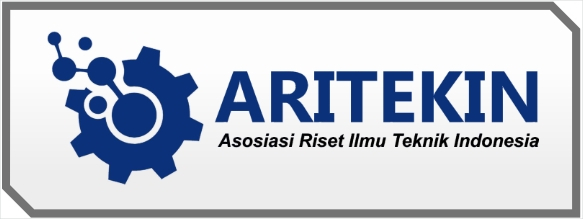A Review of Reforming Processes in the Railway Manufacturing Industry : Case Study of PT. Industri Kereta Api (Persero)
Abstract
Keywords
Full Text:
PDFReferences
Akella, S., Kumar, B. R., & Krshnaiah, Y. (2013). Optimisation of Welding Process Parameters for Distortion Control with Taguchi. . . International Journal of Precision Technology, 3. https://doi.org/10.1504/ijptech.2013.053305
Amirullah, M. A. (2018). Analisa Pengaruh Tegangan Sisa Pengelasan Terhadap Kekuatan Rangka Tubular. Jurnal Teknologi ITS, 7.
Arifin, A. & Hendrianto, M. (n.d.). Pengaruh Arus dan Jarak Kampuh Pengelasan Terhadap Distorsi Smbungan Pelat Baja Karbon Rendah Dengan Menggunakan SMAW. Teknik Mesin Untirta, 6(1), 20–25.
Bandriyana, B. (2006). Perhitungan Distribusi Tegangan Sisa Dalam Pengelasan Sambungan T Pada Sistem Pemipaan. Prosiding Semiloka Teknologi Simulasi dan Komputasi serta Aplikasi.
Budiman, A. (2024). Simulasi Distribusi Termal, Tegangan Sisa, dan Distorsi Pada Sambungan Dissimilar Branch Weld Pipa Material Carbon Steel Dengan Indonel 625 Menggunakan Elemen Hingga.
Cao, X., Rivaux, B., Jahazi, M., Cuddy, J., Birur, A. (2009). Effect of Pre and Post Weld Heat Treatment on Metallurgical and Tensile Properties of Inconel 718 alloy. Journal Material Science, 44.
Dong, Pingsha, Song, Shaopin, Zhang, J. (2014). Analysis of Residual Strees Relief Mechanisms in Post Weld Heat Treatment. International Journal of Pressure Vessels and Piping 122.
Iqbal, M. dkk. (2020). Pengaruh Reforming Terhadap Sifat Mekanik dan Ketahanan Korosi Baja Krbon Rendah SS420. Universitas Negeri Semarang.
Jhonson, A., et al. (2020). Controlled Cooling Techniques for Welding Distortion Mitigation. Journal of Welding Technology, 45(2), 112–125.
Kanga, H. T., Leeb, Y.L., Sun, X. J. (2017). Effect of Residual Stress and Heat Tereatment on Fatigue Strength of Weldments. Materials Science and Engineering. Materials Science and Engineering, 479, 37–43.
Kazanjian, C. (2017). Post Weld Haet Treatment Methods and Their Effects on Residual Stresses in Welded Structures. Journal of Materials Engineering and Perfomance, 26(9), 4345–4357.
Khan, A. et al. (2020). Adjustable Mechanical Support System for Welding Distortion Control. Welding Journal, 99(3), 45–50.
Kozak, J., & Kowalski, J. (2015). The Influence of Manufacturing Oversizing on Post Welding Distortions of The Fillet Welded Joint. Polish Maritime Research, 22, 59–63.
Krebs, J. & Kassner, M. (2007). Influence of Welding Residual Stresses on Fatigue Design of Components. Weld World, 51, 54–68.
Oliveira, D. et al. (2018). Control of Welding Distortion Using Mechanical Device. Journal of Manufacturing Science and Engineering, 140, 5.
Pangesti, A. A. (2017). Analisa Tegangan Sisa Dan Distorsi Pada Sambungan Tubular Tipe T Dengan Pengaruh Post Weld Heat Treatment Menggunakan Metode Elemen Hingga. Institute Teknologi Sepuluh November.
Prachya, P., & Poopat, B. (2015). Investigation into The Influence of Post Weld Heat Treatment on The Microstructure and Hardness of Inconel X-750. Journal of Advances in Mechanical Engineering, 1–11.
Purkuncoro, A. E. (2020). Analisis Pengaruh Proses Anneling Untuk Menghilangkan Tegangan Sisa Akibat Proses Pengelasan Pada Pembuatan Drum Ketel Uap. Jurnal Cendekia Eksakta, 39(2).
Sharma, S. D., Saluja, R., & Moeed, K. M. (2013). A Review on Effect of Preheating and/or Post Weld Heat Treatment (PWHT) on Hardened Steel. International Journal of Technical Research and Applications, 1(2), 05–07.
Suharno, Sugiyanto A., D. (2012). Advantage of SWET Technique on Joining Inconel 792 Material. Global Journal of Research in Engineering Mechanical and Mechanics Engineering, 12(6), 2249–4596.
Wiryosumarto, H. & Okumura, T. (2008). Teknologi Pengelasan Logam.
Zhang, Y., Liu, X., & Wang, S. (2019). Controlled Cooling Techniques to Mitigate Welding Distortion in Aluminium Alloys. International Journal of Advanced Manufacturing Technology, 103(1–4), 345–356.
DOI: https://doi.org/10.31315/jmept.v5i1.12772
Refbacks
- There are currently no refbacks.
Copyright (c) 2024 Stephanus Yosi Kristanta
Journal of Metallurgical Engineering and Processing Technology indexed by:

Journal of Metallurgical Engineering and Processing Technology (JMEPT)
Department of Metallurgical Engineering, UPN "Veteran" Yogyakarta
Metallurgical Research and Development Centre (MRDC)-UPNVY
Gd. Urip Sumohardjo Lt. 2
Jl. Babarsari No. 2, Tambakbayan, Yogyakarta 55281
View My Stats










1.png)
1.png)